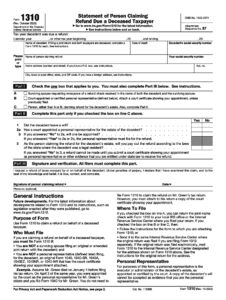
To compare QuickBooks vs. Xero accounting, we consulted product documentation excel cash book and user reviews. We considered features such as invoicing, billing, payments, expense tracking, mileage tracking, project and time tracking and inventory management. We also weighed factors such as pricing, user experience, customer service and integrations. QuickBooks is the leading accounting software for small businesses, designed to simplify financial management and empower growth. With a user-friendly interface and a comprehensive suite of tools, QuickBooks streamlines tasks like invoicing, expense tracking, and reporting, giving you a clear picture of your financial health.
This section focuses more on first-time setup and software settings. Even after initial setup, the software must also let users modify information like company name, address, entity type, fiscal year-end, and other company information. QuickBooks Online outclasses Xero in this category as it offers more useful features that aid in setting up the software. Xero took a hit for its lack of assisted onboarding support and new company wizard, but it does offer the ability to import beginning balances—a feature that QuickBooks Online lacks.
Supported Languages

QuickBooks has an online portal that users with common problems can check to resolve any issues without involving customer support. It includes articles and videos, grouped by the type of QuickBooks product, and further broken down into categories such as ‘Account Management,’ ‘Taxes,’ and ‘Sales and Customers,’ among others. Video training courses, a blog, and a community forum are also available. Neither QuickBooks or Xero offers a permanent free plan, but if that’s what you need, we have a guide to the best free accounting software.
Both have great A/P features, but QuickBooks Online is slightly better due retained earnings formula definition to its ability to generate recurring payments. Xero lets you create a recurring bill but not the payment, which means it doesn’t charge your checking account automatically. QuickBooks Online came out on top for several features, ease of use, and customer support among others, but Xero wins in pricing. We’ll explain our Xero vs QuickBooks comparison findings in greater detail in the following sections.
Why You Can Trust Fit Small Business
What sets Xero apart is its emphasis on simplifying accounting concepts for individuals who may be unfamiliar with financial jargon. Moreover, Xero’s tiered pricing incorporates a range of features that make it particularly suitable for growing businesses. With a free plan and paid plans starting at $20 per month, Zoho Books has plans for most budgets. Higher-tier plans include unique features, like workflow rules, on top of tools that help you measure project profitability.
- Xero also offers mobile receipt capture through its Xero Me mobile app (previously called the Xero Expenses app), though you’ll need to upgrade to the Established plan to claim expenses.
- Xero is the winner in this category, offering more than 700 apps that can connect with its core application.
- A Live Bookkeeper cannot begin cleaning up your past books until they receive the required supporting documentation, which your bookkeeper will request from you after your first meeting.
- Depending on the plan you select, QuickBooks Online’s monthly prices run from $30 for the Simple Start plan to $200 for the Advanced plan.
- Pricing is never a straightforward comparison, because different accounting software providers emphasize different features.
This seamless integration saves time, ensures accuracy, and eliminates manual errors. With QuickBooks, you’ll get expert help from real people through phone and live chat six days a week. Our specialists are here to support you with every part of your QuickBooks journey, from the initial switch to onboarding. QuickBooks’ user-friendly interface makes navigating your finances a breeze, even if you’re not an accounting expert. The layout and simple design ensure that you can find what you need quickly and efficiently.
Best Accounting Software for Small Businesses of 2024
Resources include how-tos, explainers, and professional development courses. Both services will allow you to modify your main dashboard to display the stats that matter most to you, but QuickBooks offers a little more flexibility. We’d recommend checking the total features offered by the QuickBooks Essentials and Xero Growing plans against your business’s needs. Similarly, all of Xero’s plans are often 50% off for the first three months.
The Xero Me app can track and enter mileage from business trips, and Xero offers a built-in integration with HubDoc to extract data from bank statements and financial documents and upload it into Xero. Xero has a pricing structure similar to QuickBooks Online and offers three products–Early, Growing, and Established–ranging from $15 per month to $78 per month. For companies needing a payroll function for their employees, Xero offers add-on integrations for an additional cost. On the other hand, Xero may be the better choice for your business. Xero is strong accounting software that has everything you need to track the financials of your business. Some of its features really stand out, such as its customer management system.
Xero also offers two stand-alone apps — accounting cycle steps explained Xero Expenses and Xero Projects — for users on its Established plan. These apps allow you to capture photos for receipts, submit expense reports, track time, and attach billable expenses and time to individual projects. Pricing is never a straightforward comparison, because different accounting software providers emphasize different features. In this case, we give the edge to Xero because its entry-level Early plan includes more features than QuickBooks’ Self-Employed plan at a lower price point. However, QuickBooks’ second-tier Simple Start plan packs more tools than Xero’s second-tier Growing plan.
Note that fixed asset accounting isn’t part of our case study, so there are no scores. Evaluate functions and features for different kinds of businesses. Its data-entry screens are more minimalist than those of QuickBooks Online, and its invoice and billing entries require less in the way of data entry. Help is accessible from any data-entry screen, and a demo company is available for those who want to enter practice transactions without worrying about messing up their own data. Xero’s accounting functionalities are fairly simple to navigate, so it’s likely these resources will be sufficient if and when something goes wrong. All of these things can cause extreme frustration, and you’ll need the assistance of product support to solve these problems.
